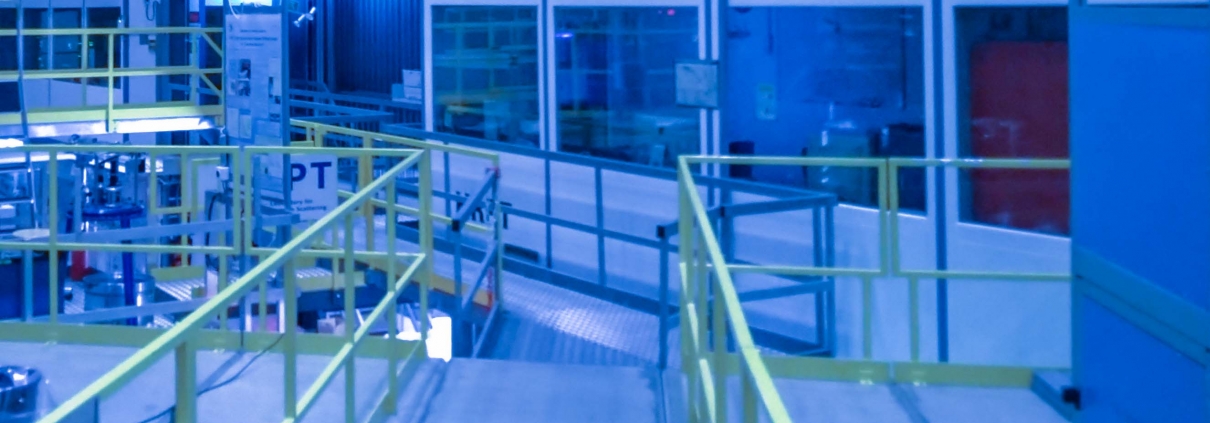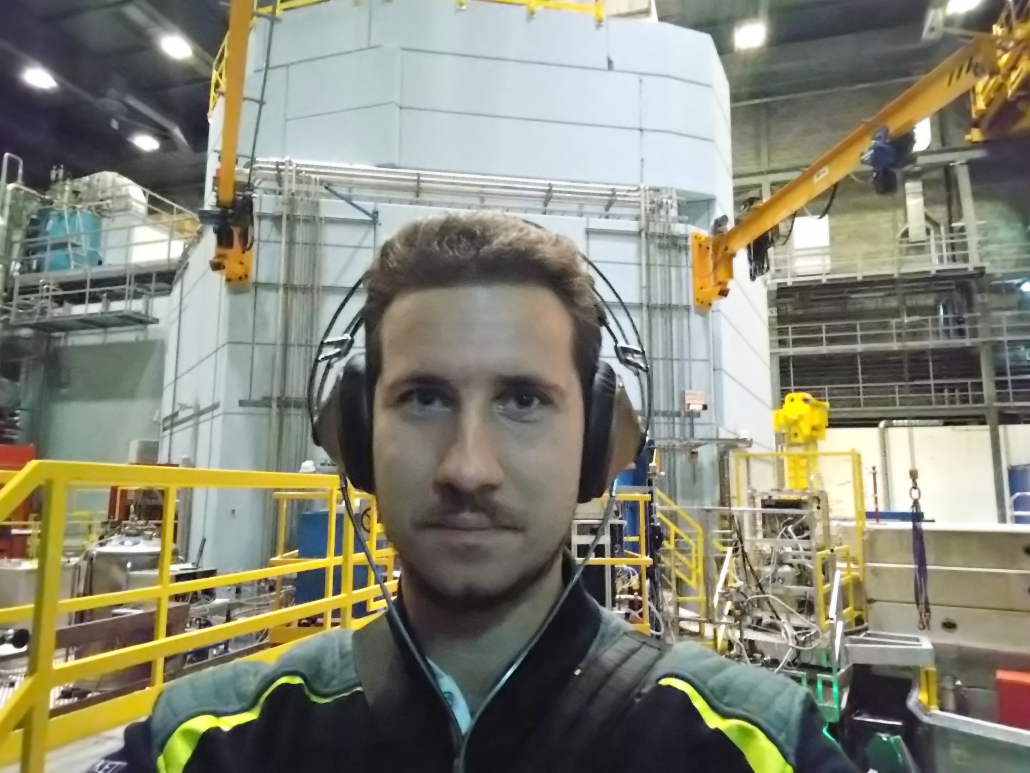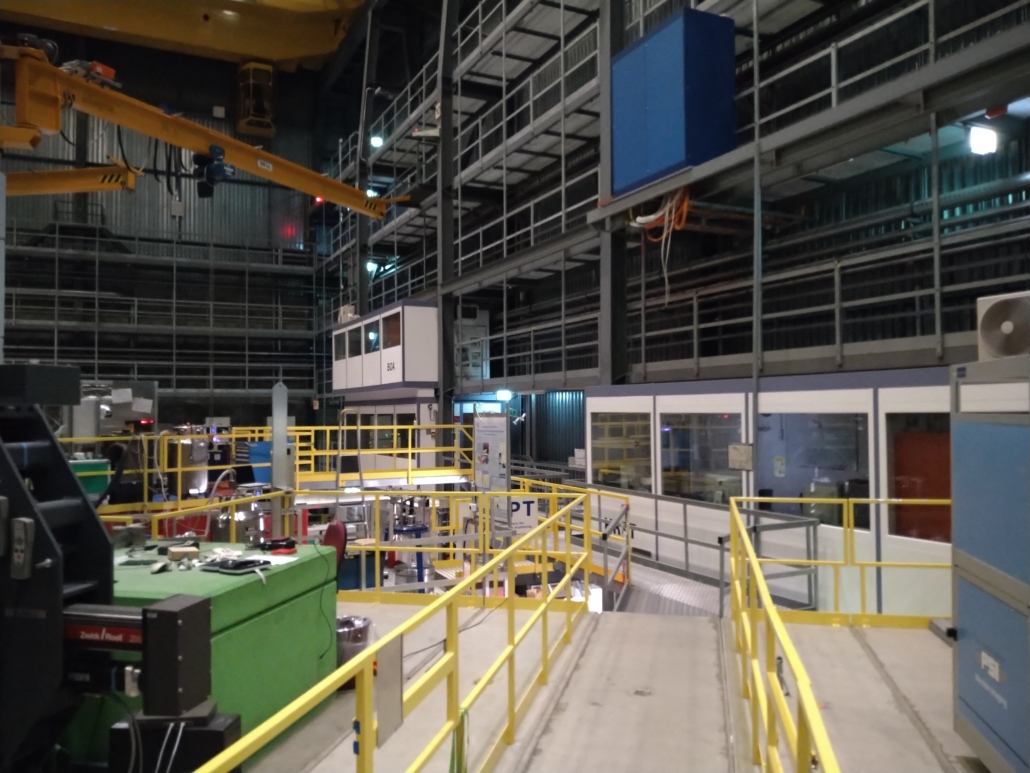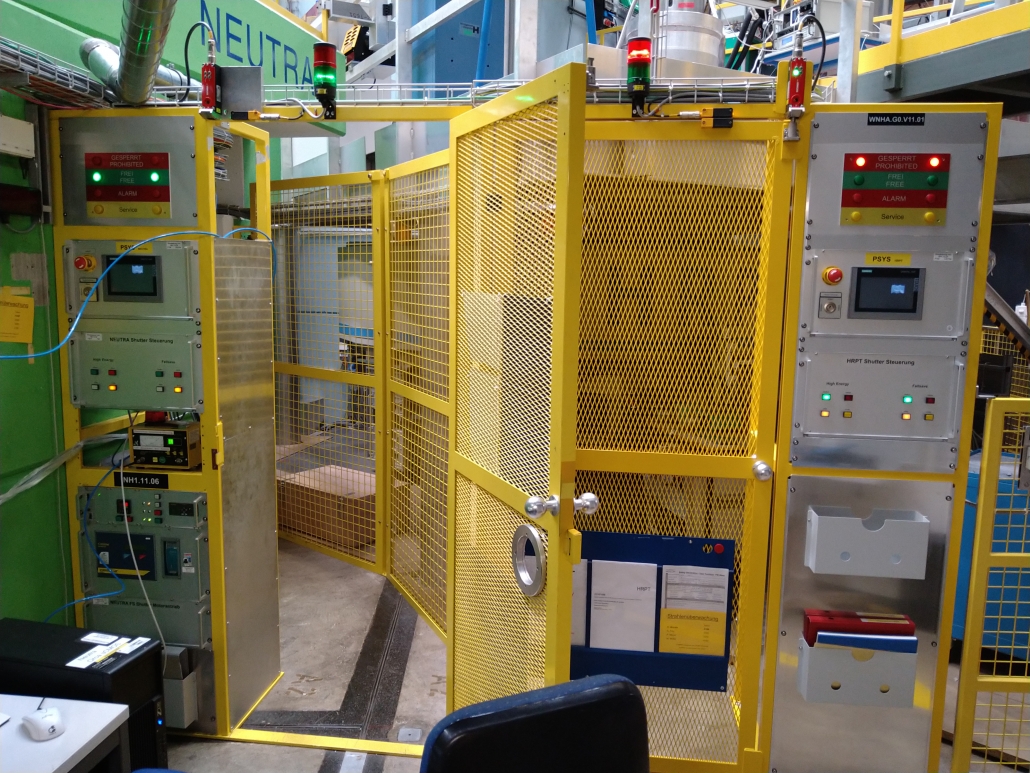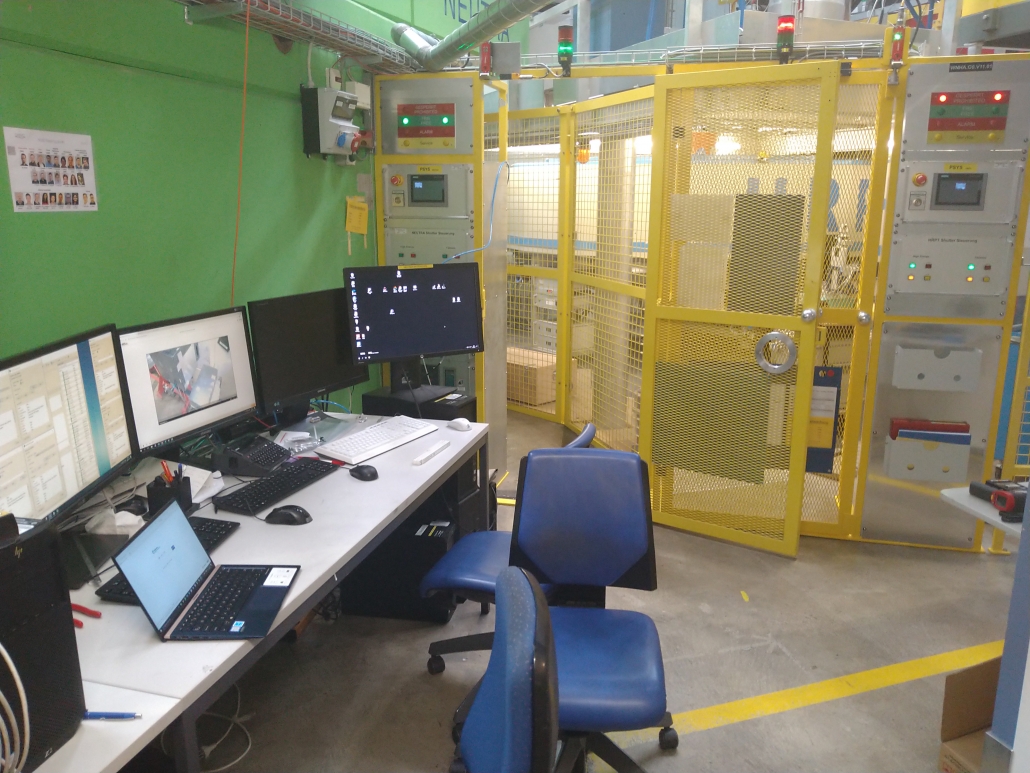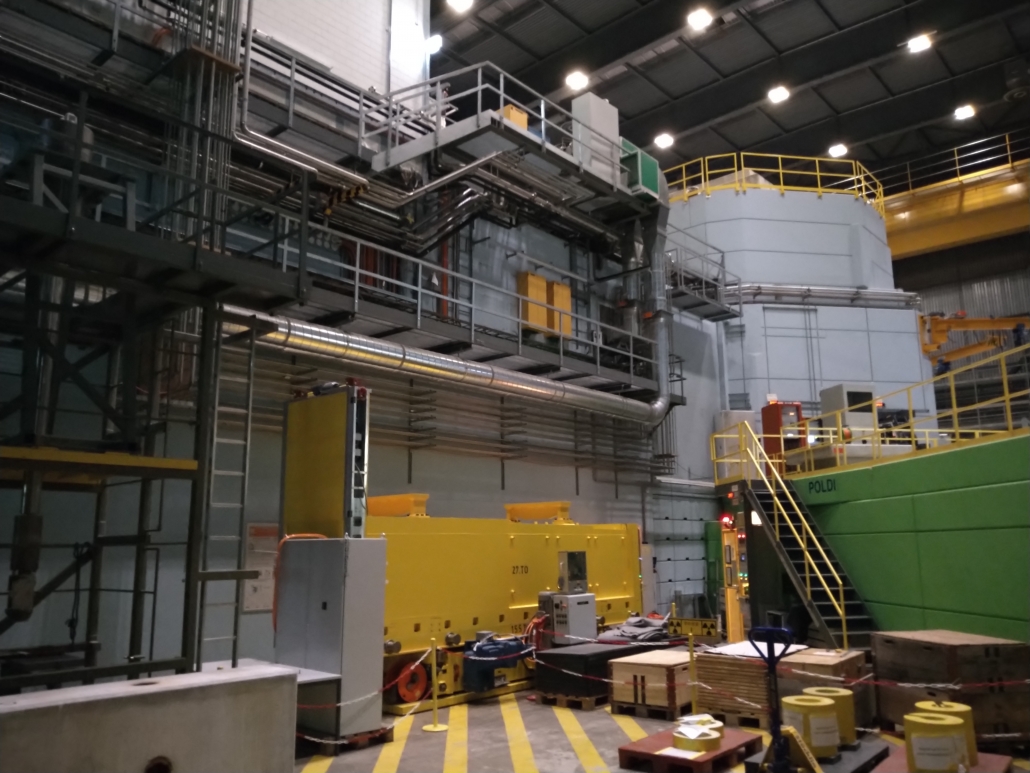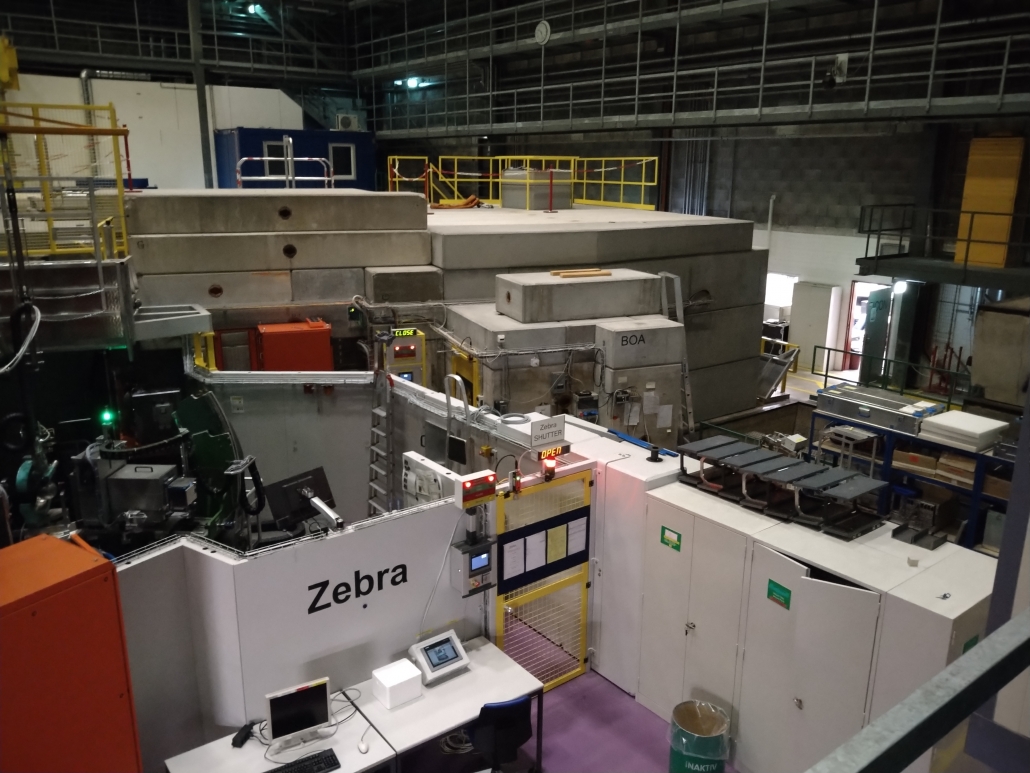Our researchers are conducting neutron radiography experiments at the Paul Scherrer Institute in Switzerland
Researcher Mihails Birjukovs from the Institute of Numerical Modelling is currently working as a guest researcher in the Paul Scherrer Institute (PSI) in Switzerland. He arrived on the 5th of August and for the following two months will be conducting a series of three experiments as a part of a larger research project Developing new numerical modelling tools for researching multiphysical processes in electromagnetic liquid metal technologies (Nr. 1.1.1.1/18/A/108).
Bubble chain flow in the presence of a magnetic field is investigated. Neutron radiography is used to monitor the flow of argon bubbles in optically opaque gallium. Neutron radiography is conceptually similar to X-Ray radiography. However, unlike X-rays that interact with electrons, neutrons interact with atomic nuclei instead. Gallium, which is one of the most commonly used model liquids, absorbs X-rays more than it does neutrons. This means that neutron radiography can be used to “see” less absorbent bubbles in liquid gallium better than X-ray radiography would allow.
Due to a significant difference between neutron absorption coefficients for argon and gallium, an image can be formed wherein the gas bubble flow can be seen when the neutron beam interacts with the sample. The different gallium and argon interaction with a neutron beam is used by our researchers to probe a miniaturized model of a liquid gallium system that is stirred via argon gas bubble flow. The conclusions from this work can be transferred and applied to larger-scale technological processes as the chosen parameters for the model system are consistent with those of larger industrial systems.
Experiments are done both in the presence of a magnetic field and without it, with different gas flow rates. The goal of the experiments is to understand the influence of magnetic field orientation and intensity on gas bubble flow stability and other characteristics. It is important to note that the neutron radiography technology in PSI is unique because it provides high enough neutron flux for the acquisition of images with high temporal resolution but at the same time it also allows large duration experiments that would normally be much more challenging because of gallium activation at even higher neutron flux. Besides the experimental work, a tool for image processing is also currently being developed and improved (by Mihails Birjukovs and Pēteris Zvejnieks), which enables the researchers to directly compare the experimental data with the output from numerical models.
An important part of the experiments was also done by Jevgēnijs Teličko who developed the liquid gallium heating and gas supply systems; by Pēteris Zvejnieks who conducted a part of the experimental series in PSI; and by the senior researcher Imants Bucenieks (Institute of Physics) who assembled the magnetic field systems used in the experiments.
The research proposal for this experiment by the Institute of Numerical Modelling was announced to have won in a stiff competition with approximately 5 applications from all over the world per one open position. We are grateful to PSI for the technical and financial support, without it the previously described experiments would not be possible. In the second half of September, Mārtiņš Klevs will join Mihails Birjukovs for the third and final round of the neutron radiography experiments at PSI

